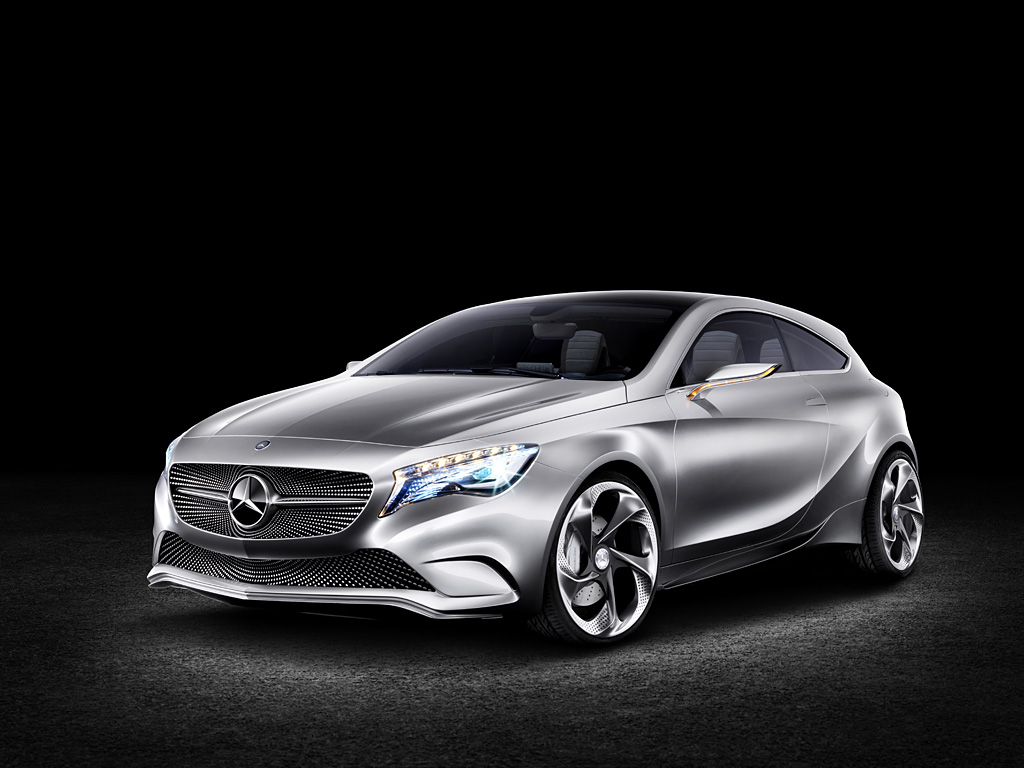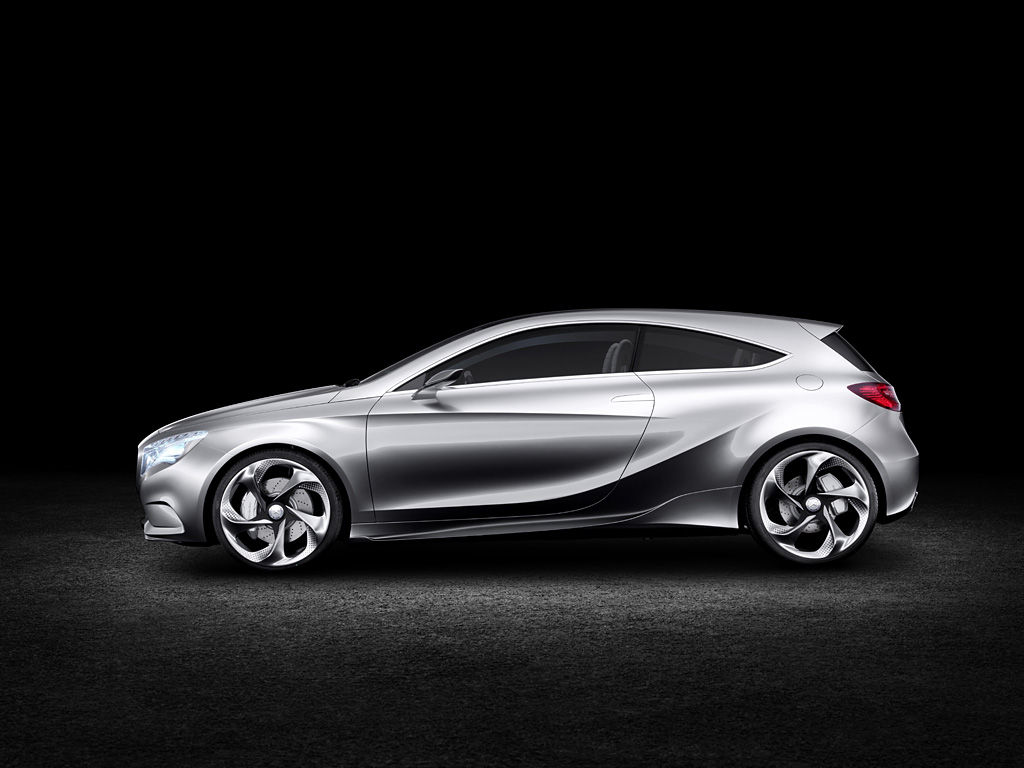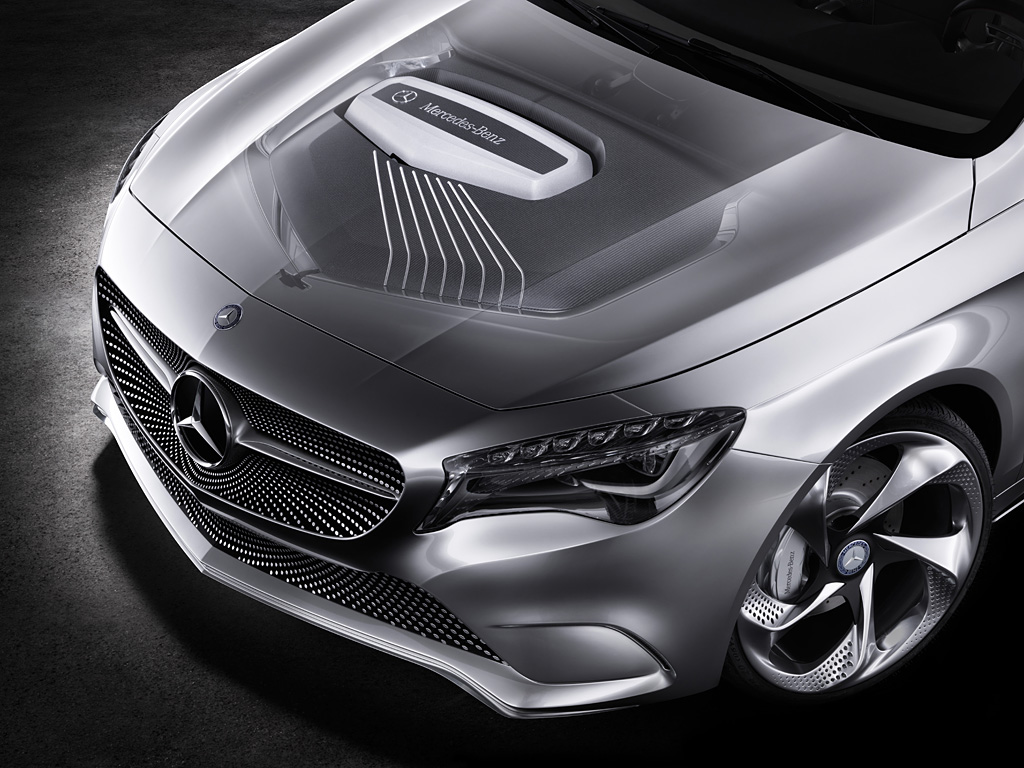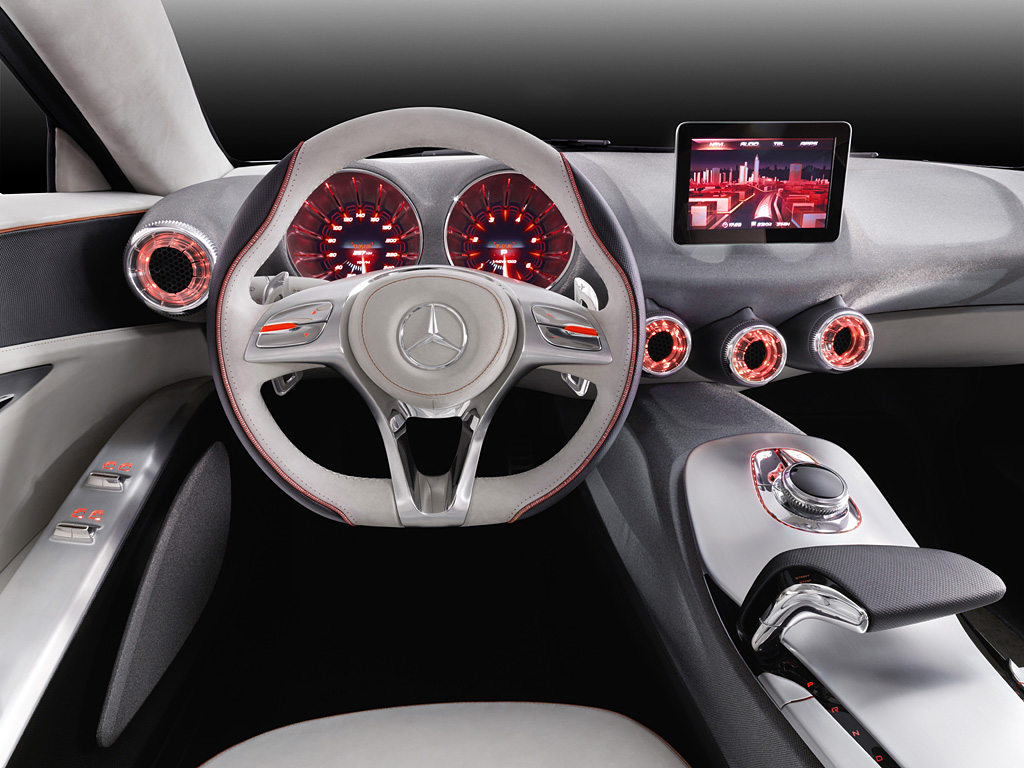2011 Mercedes-Benz Concept A-Class
Stuttgart/Shanghai. With the Concept A-Class, Mercedes-Benz is presenting a car that might have come from another planet: its expressive design symbolises concentrated dynamism. The technical highlights include a new, turbocharged four-cylinder petrol engine, a dual clutch transmission and a radar-based collision warning system with adaptive Brake Assist.
A long bonnet, a low silhouette and slim window areas: the proportions of the Concept A-Class suggest concentrated dynamism. The car’s sporty appearance is given particular depth by the interplay between lines and surfaces. The wind and the waves, as well as aviation engineering, were the sources of inspiration for its designers.
It is not only visually, but also technologically that the Concept A-Class is ushering in a new compact class era at Mercedes-Benz. This front-wheel drive model is powered by a four-cylinder petrol engine from the new M270 series.It was designed for transverse installation, and thanks to direct injection and turbocharging it offers high performance potential together with minimal emissions and enhanced fuel consumption. The Concept A-Class is equipped with the two-litre variant of the new engine, developing 210 hp. This BlueEFFICIENCY unit is combined with the new Mercedes-Benz dual clutch transmission.
As a world first in the compact class, the concept car features a radar-based collision warning system with adaptive Brake Assist, which lowers the risk of rear-end collisions. This assistance system, Collision Prevention Assist, gives a visual and acoustic warning to a possibly inattentive driver, and prepares Brake Assist for an absolutely precise braking response. This is initiated as soon as the driver emphatically operates the brake pedal.
Defined edges and a free interplay with the body surfaces
The exterior design of the Concept A-Class features the combination of defined edges and free interplay with the body surfaces that Mercedes-Benz first showed in the F 800 Style. The side view is structured by three prominent lines: the front structural edge above the front wing forms a dropping line, while the prominent shoulder muscle above the rear axle underlines the car’s coupé-like character. A further line extends upwards from the rear wheel arch in a sweeping curve.
The front end of the Concept A-Class is a real eye-catcher. The brand logo appears to be surrounded by a starry sky. Where there are usually apertures or louvres, the radiator grille consists of numerous metallic silver “dots” on black stems. This theme is reflected in the design of the wheels. A very special effect is created by the lights of the Concept A-Class, as the innovative full-LED high-performance headlamps repeat the starry sky motif with numerous lighting points. The daytime running lamps consist of 90 optical fibres with aluminium sleeves, and they are arranged in a wing-shape within the headlamp.
In the interior of the Concept A-Class the eye is immediately drawn to the dashboard, which has the shape of an aircraft wing and a translucent, stretchable textile lining. This enables the bionic, cellular structure of the component to remain visible.
The shape of the air vents in the dashboard is reminiscent of a jet aircraft engine. The prominent displays in the instrument cluster are in red. Their appearance is inspired by the afterburner of a jet engine. The central control unit is designed as a modern flight panel, with the shift lever taking the form of a “reverse thrust control”.
A smartphone is fully integrated into the operating concept of the Concept A-Class. All the applications, services and features of a digital lifestyle can therefore be operated via COMAND Online. The visual presentation of the display screen elements is unique and revolutionary. Dynamically varied glass elements are illuminated by magenta-coloured light to form three-dimensionally arranged navigation levels.
In Detail
| submitted by | admin |
| type | Concept / Prototype Car |
| released at | 2011 Shanghai |






















